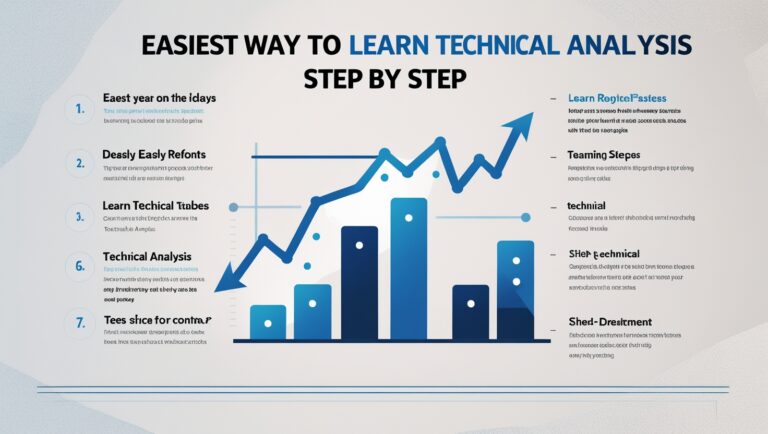How to Spot Trend Reversals Before the Market Reacts
How to Spot Trend Reversals Before the Market Reacts
Spotting trend reversals before the market reacts is a skill that separates successful traders from beginners. I remember struggling to anticipate market moves when I first started. In this guide, I’ll share how to spot trend reversals before the market reacts, the indicators I rely on, and the tools I use to trade confidently and pay my bills monthly with stocks.

Table of Contents
Why Identifying Trend Reversals Matters
Trend reversals indicate a potential change in market direction. Catching them early can maximize profits and reduce losses.
When I ignored reversals in the past, I often entered trades too late or exited prematurely. Learning to read the signs changed my trading results significantly.
Step 1: Understand the Market Structure
Before spotting reversals, I analyze the current trend—whether the market is trending up, down, or sideways.
Knowing the trend provides context, helping me identify when a shift may be forming.
Step 2: Watch Key Support and Resistance Levels
Support and resistance levels act as barriers for price movements.
A trend reversal often occurs when price breaks a significant support or resistance level, signaling a potential change in direction.
Step 3: Use Technical Indicators
Indicators like RSI, MACD, and moving averages provide clues about trend strength and potential reversals.
- RSI: Signals overbought or oversold conditions
- MACD: Shows momentum shifts and possible trend changes
- Moving Averages: Help spot trend direction and crossovers that indicate reversals
Combining these indicators improves accuracy and reduces false signals.
Step 4: Observe Candlestick Patterns
Candlestick patterns often give early hints of reversals.
Patterns like hammer, shooting star, engulfing, and doji can indicate a change in sentiment before the broader market reacts.
Step 5: Track Volume
Volume confirms the strength of a trend reversal.
A reversal accompanied by high volume is more likely to succeed than one with low volume. I always check volume before committing to a trade.
Step 6: Use Alerts and Scanners
Setting alerts on TradingView helps me catch potential reversals as soon as they occur.
I also use scanners to monitor multiple stocks, identifying reversal setups without staring at charts all day.
How I Apply Trend Reversal Analysis
I combine trend analysis, indicators, candlestick patterns, and alerts to create a reliable system for spotting reversals early.
My ebook, How I Pay My Bills Monthly With Stocks, explains exactly how I integrate trend reversal strategies with TradingView to generate consistent monthly income.
Getting Started Today
Focus on market structure, key support and resistance levels, candlestick patterns, and indicators. Practice spotting reversals on charts and gradually apply them in real trades.
- Sign up for TradingView to chart, set alerts, and scan for reversal opportunities: https://www.tradingview.com/?aff_id=155687
- Learn my full system for turning trend reversals into consistent monthly income: https://stockflowreport.gumroad.com/l/paybillswithstocks
By mastering these steps, even beginners can spot trend reversals before the market reacts and trade with confidence.
When I first started trading, I often missed trend reversals because I didn’t understand the importance of market context. Knowing the current trend makes spotting reversals much easier.
Support and resistance levels are my go-to starting points. I mark key levels on my charts to see where price might bounce or break, giving me early clues about a potential reversal.
Indicators like RSI, MACD, and moving averages have become essential tools. RSI helps identify overbought or oversold conditions, while MACD highlights shifts in momentum.
Moving average crossovers are one of my favorite signals. When a short-term moving average crosses a long-term one, it often signals a potential trend change before the market reacts.
Candlestick patterns give visual confirmation of sentiment shifts. Patterns like hammer, shooting star, engulfing, and doji can show that buyers or sellers are losing control.
Volume is critical for confirmation. A trend reversal accompanied by high volume is much more reliable than one with weak volume. I always check the volume before making a trade.
I also watch for divergence between price and indicators. For example, if the price makes a new high but RSI doesn’t, it can signal a possible reversal.
Price gaps are another early indicator. Gaps that appear after significant moves can suggest exhaustion and the start of a trend reversal.
I keep a watchlist of stocks that show strong trends and patterns. This focused approach allows me to spot reversals without getting overwhelmed by the entire market.
Paper trading is a great way to practice spotting reversals without risking real money. TradingView’s paper trading feature lets me test strategies and improve accuracy.
Alerts and notifications on TradingView save time and ensure I don’t miss critical signals. I set alerts for support/resistance breaks, indicator crossovers, and unusual volume spikes.
I always calculate my risk before entering a reversal trade. Stop-loss levels are essential to protect my capital if the reversal fails.
Combining these techniques with my structured system from How I Pay My Bills Monthly With Stocks allows me to turn trend reversal analysis into consistent monthly income.
Consistency is key. Reviewing charts and indicators daily strengthens my ability to recognize patterns early and improves decision-making over time.
Finally, by mastering trend reversal analysis and practicing these steps, even beginners can trade confidently, catch profitable moves early, and minimize risk.
One thing I’ve learned is that patience makes all the difference. Not every setup will result in a trade, and waiting for the right signals ensures higher accuracy and lower risk.
I pay attention to multiple timeframes. Sometimes reversals are more apparent on longer-term charts, while intraday charts show early signs of momentum shifts.
Combining indicators and patterns reduces false signals. I use moving averages for trend direction, RSI for overbought/oversold conditions, and candlestick patterns for entry timing.
Tracking volume and unusual price activity helps me confirm whether a reversal is strong or likely to fail. Reversals with high volume are far more reliable.
Finally, using these strategies alongside my system from How I Pay My Bills Monthly With Stocks allows me to anticipate trend reversals, execute trades confidently, and generate consistent income, even as a beginner.

Stay ahead in the stock market! Subscribe to our newsletter and receive exclusive stock flow reports, trading insights, and actionable tips directly in your inbox. Join thousands of traders who get our updates first.







